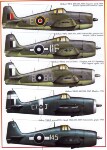R Leonard
Staff Sergeant
Ok, did a little digging and found the "flying messcook".
S2c George W. Webber was a NAP aboard the Lexington and eventually retired from the Navy in '59 with the rank of Commander.
George Willis Webber (3939952) earned his NAP wings in 1931. He was one of the very few who did so before being a rated petty officer (I've only found five of six such individuals). Since he was not a petty officer, he was subject to being dragooned into various mundane tasks besides flying, among which was in the crews' mess. In those days, and indeed up through 1942, each squadron had its own bevy of enlisted personnel who handled everything related to the squadron and its operations, all subject to such shipboard drafts as levied . . . Webber, not a petty officer, was just another seaman in that structure, that was the way it worked. So, in his first fleet assignment after Pensacola, he found himself aboard assigned to VS-2 as a pilot, but also pulling occasional mess duty. When the ship's captain, one Ernest J King (June 1930 to May 1932), learned of this state, he did two things, one, forbad NAPs from serving duties other than related to flying operations and, two, promoted Webber to AMM3c.
By 1939, Webber was a ACMM (translated: Aviation Chief Machinist Mate, a chief petty officer) serving in VP-12. In April 1939 he was transferred to VP-9 for TAD pending further transfer to VP-18 which happened about a month later. In December 1940 he as assigned to VP-102 at Subic and was there when the war started. On 19 March 1942, while still with VP-102 he accepted a warrant appointment as a Machinist, thus becoming MACH George Willis Webber (136887). VP-102, due to losses was rolled into VP-101 and while in that squadron he was promoted commissioned an Ensign on 19 Jun 1942 and He remained with VP-101 until transferred to Norfolk NAS as an assistant operations officer in May 1943, receiving a promotion to Lieutenant (JG) effective 1 May. His promotion to Lieutenant came on 1 July 1944. The last assignment I have for him during the war was with VC-27 at NAS Seattle in May 1945.

